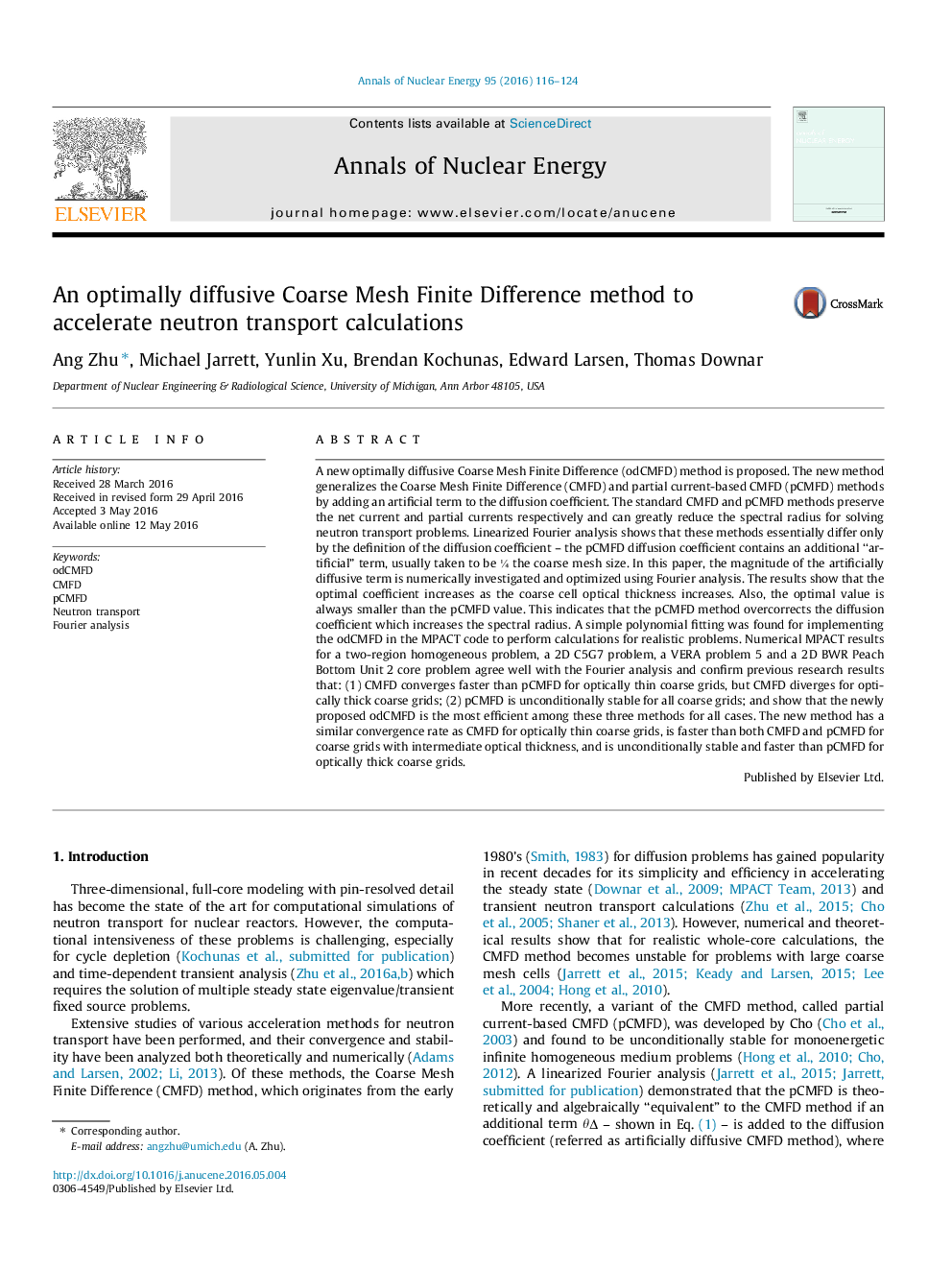| کد مقاله | کد نشریه | سال انتشار | مقاله انگلیسی | نسخه تمام متن |
|---|---|---|---|---|
| 1727964 | 1521102 | 2016 | 9 صفحه PDF | دانلود رایگان |
عنوان انگلیسی مقاله ISI
An optimally diffusive Coarse Mesh Finite Difference method to accelerate neutron transport calculations
ترجمه فارسی عنوان
یک روش متمایز محدود برای اندازه گیری میزان حمل و نقل نوترونی به روش توزیع شده بهینه
دانلود مقاله + سفارش ترجمه
دانلود مقاله ISI انگلیسی
رایگان برای ایرانیان
موضوعات مرتبط
مهندسی و علوم پایه
مهندسی انرژی
مهندسی انرژی و فناوری های برق
چکیده انگلیسی
A new optimally diffusive Coarse Mesh Finite Difference (odCMFD) method is proposed. The new method generalizes the Coarse Mesh Finite Difference (CMFD) and partial current-based CMFD (pCMFD) methods by adding an artificial term to the diffusion coefficient. The standard CMFD and pCMFD methods preserve the net current and partial currents respectively and can greatly reduce the spectral radius for solving neutron transport problems. Linearized Fourier analysis shows that these methods essentially differ only by the definition of the diffusion coefficient - the pCMFD diffusion coefficient contains an additional “artificial” term, usually taken to be ¼ the coarse mesh size. In this paper, the magnitude of the artificially diffusive term is numerically investigated and optimized using Fourier analysis. The results show that the optimal coefficient increases as the coarse cell optical thickness increases. Also, the optimal value is always smaller than the pCMFD value. This indicates that the pCMFD method overcorrects the diffusion coefficient which increases the spectral radius. A simple polynomial fitting was found for implementing the odCMFD in the MPACT code to perform calculations for realistic problems. Numerical MPACT results for a two-region homogeneous problem, a 2D C5G7 problem, a VERA problem 5 and a 2D BWR Peach Bottom Unit 2 core problem agree well with the Fourier analysis and confirm previous research results that: (1) CMFD converges faster than pCMFD for optically thin coarse grids, but CMFD diverges for optically thick coarse grids; (2) pCMFD is unconditionally stable for all coarse grids; and show that the newly proposed odCMFD is the most efficient among these three methods for all cases. The new method has a similar convergence rate as CMFD for optically thin coarse grids, is faster than both CMFD and pCMFD for coarse grids with intermediate optical thickness, and is unconditionally stable and faster than pCMFD for optically thick coarse grids.
ناشر
Database: Elsevier - ScienceDirect (ساینس دایرکت)
Journal: Annals of Nuclear Energy - Volume 95, September 2016, Pages 116-124
Journal: Annals of Nuclear Energy - Volume 95, September 2016, Pages 116-124
نویسندگان
Ang Zhu, Michael Jarrett, Yunlin Xu, Brendan Kochunas, Edward Larsen, Thomas Downar,
